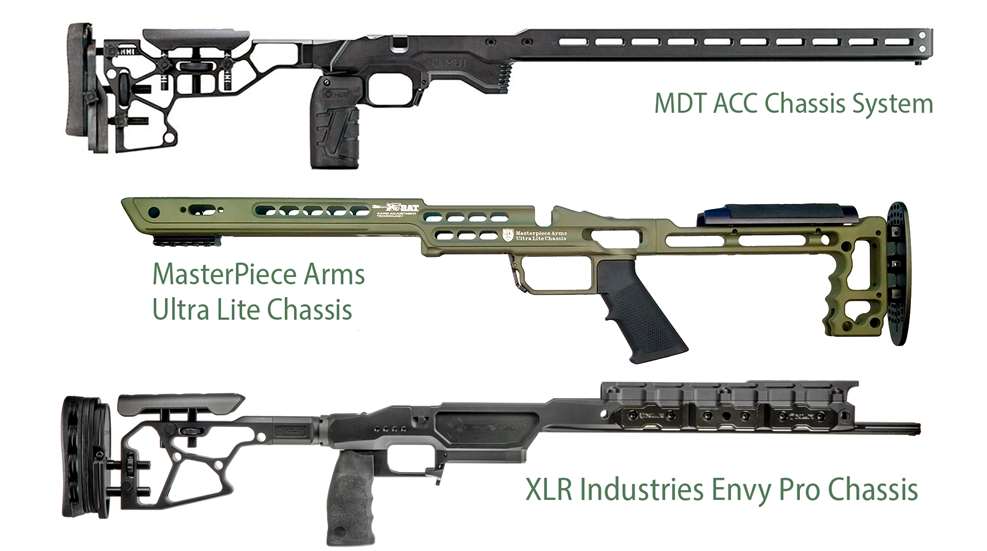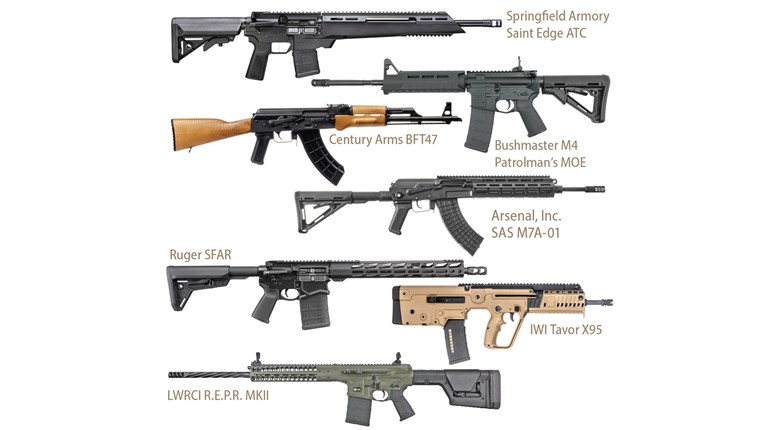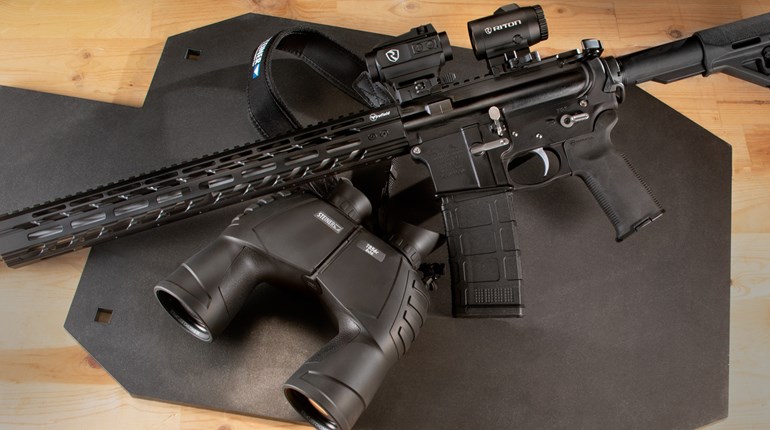
We expend much of the ink in these pages on information about modern firearms that are either designed or have been repurposed for defensive- or professional-duty use. While many of my peers may disagree on this point, the reality is that we gunwriters react to what the shooting public is doing rather than drive it. But, focusing on what is in vogue often takes away from other interests. Among the rifle-shooting disciplines, bolt-action rifles are a perfect example. Turnbolt technology tends to get print space in one of two instances: either a new cartridge is being marketed in tandem with a particular rifle model (usually from a well-heeled manufacturer) or a new rifle is so radically different from its contemporaries that it becomes the belle of the ball for a time. Whatever transpires between those bookends is usually lost in the shuffle.
One popular upgrade among bolt-gunners is not found in the action or barrel; it is in a chassis stock system. Yes, chassis have been around for several decades and yes, we have covered them, sometimes in passing and sometimes in detail. My September 2017 column touched on the subject as it related to my first use of an Accuracy International AWM rifle as an Army sniper, followed by my later experience with an aftermarket chassis from MDT. But, much has changed since then and to my way of thinking—all for the better.
Chassis stocks are no longer the exclusive domain of long-range competitors and elite military- or police-sniper elements. Rifle- and aftermarket-stock makers are tapping into a general rifle-shooting population that includes hunters and target shooters, too. Whenever things migrate into the practical realm—and become more affordable and simpler in the process—my antennae go up.
In the firearm world, the chassis descriptor means different things to different people. As I see it, the predominant characteristics of portable chassis stocks—as opposed to gun carriage fixtures—are that they contain built-in bedding systems to consistently and solidly seat their actions, are typically built along non-traditional lines, use materials such as aluminum and carbon-fiber composites and they are usually modular in nature. While some traditionally-styled bolt-gun stocks employ bedding blocks and better-than-wood materials, chassis stocks are the simplest way to get all of the above characteristics in a ready-made package.
Some chassis rifles from well-known rifle manufacturers, such as Remington’s PCR and Winchester’s XPC, appear to have fallen out of their product lines. But, other makers have multiple offerings to fill the void. For example, Savage’s Axis II presents six different chambering options and a starting MSRP of $999 at
the time of this writing. SIG Sauer continues to push into new directions with its Cross rifle. Current pricing starts at $1,499 in three chambering configurations. The Ruger Precision Rifle ups the ante with seven chambering options (including .300 PRC and .338 Lapua Mag.) and a starting price of $1,819. Premium and custom rifle makers have chassis options, too, but their prices tend to be well above these off-the-shelf rifles.
That may be good news if you are in the market for a new rifle, but what about upgrading that proven bolt-action that continues to deliver, year after year? Thankfully, there may be a chassis solution for it, too. Several companies specialize in models for the most popular bolt-action rifles being used today. While features vary between brands, several things appear to be fairly common. Examples include modular grip and some modular stock abilities, ARCA/Swiss-style rails, 1.5-inch fore-end rails on many models and magnesium, carbon fiber or titanium used on the lightest chassis. V-block bedding is common, as are detachable magazines and the ability to add weights when needed. Color choices cover the spectrum and lastly, most makers offer both side-folding and rigid-buttstock options for at least one model. What follows are snapshots from three companies that offer a wide variety of chassis options at affordable prices.
MDT offers a broad array of options for specific platforms, including CZ, Howa, Mossberg, Remington, Ruger, Savage, Tikka and Winchester. Eight models are available for righties and three for lefties. The XRS, LSS-XL, LSS-Gen 2 and LSS RF Gen 2 models retail between $399 and $549. MDT’s upper-tier competition model, the ACC, starts at $1,189 while the HNT26 hunting model begins at $1,299 and weighs in at 26 ounces.
MasterPiece Arms (MPA) comes in a bit higher, with its least-expensive chassis at $850, and the top-end model starting at $1,350. The list of actions supported by MPA’s six right-hand and five left-hand options features AI, CZ, Howa, Remington, Savage, Tikka and others. At 40 ounces with buttstock and grip included, MPA’s lightest model is beefy.
With a range of supported models that includes BAT, CZ, Remington, Howa and Savage, XLR Industries is the most cost-effective of the three companies considered here. The company offers eight chassis total, all of which can be user-configured for left- or right-handed bolt manipulation. Models are offered for hunters, bolt-action-pistol applications and long-range competition. Six chassis come in at less than $600, but its top-end competition model, the Envy Pro JV, starts significantly higher at $1,295. The lightest XLR chassis tips the scales at 27 ounces, which includes a carbon-fiber buttstock or grip.
When shopping for an aftermarket chassis, keep in mind that unless otherwise specified, the pistol grip, buttstock assembly and other accessories are usually not included in the base cost. Fortunately, several systems accept the AR platform’s grips and buffer tubes (for stock mounting), with most featuring M-Lok accessory slots.
The left-handed Savage Model 10 action that I built and mated to an MDT LSS chassis several years ago continues to be an excellent rifle, but it is far heavier than I like. Since my days of shooting for survival or for score over long distances are over, XLR’s lightweight and practical hunting chassis is getting a hard look from me at the moment. Hopefully, by the time I get around to commenting on that project, the number of bolt-action models supported by chassis manufacturers will have grown and I will have more good news to report.





































